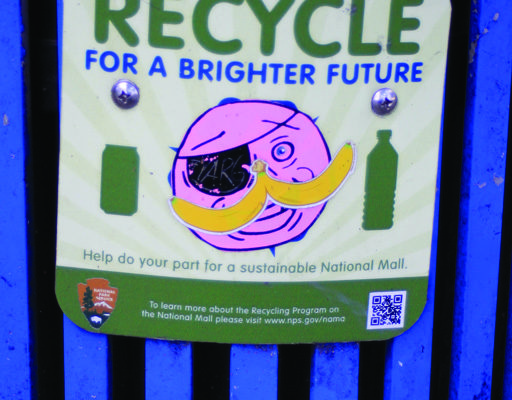Rate multiplied by time equals distance. Take the two known factors and solve for the third. This simple lesson from Mr. Brown’s algebra class came to mind as I recall my walk along the National Mall on the opening day of the Keep America Beautiful National Conference last month.
The hotel was a mile and a half away from the top site to see on my list — the Lincoln Memorial. I needed to be in suitable attire and in the conference room at 10 a.m. for the first session. So, I knew the distance and my pace, right at three and a half miles an hour, all that was left was time. A pre-dawn goal to leave at 5 a.m. turned out a bit ambitious. Instead I left the lobby right at 6. A couple hours before the traditional work day meant few people in the residential Washington, D.C. neighborhood north of the mall. Most trees still held their leaves of red, yellow and orange. When I arrived the Lincoln Memorial had a soft glow as the sun rose to the east behind the reflecting pool and Washington Monument.
Besides the two formerly mentioned landmarks, I spent time at the World War II and Vietnam memorials. Such moving tributes to our servicemen and women despite vastly different designs. The overcast morning and relatively light number of park visitors combined for a memorable experience as well as favorable lighting for photography. Until later in the morning it did not occur to me that I had visited my latest national park.
Ashley McEvoy, National Park Foundation senior manager of Resilience and Sustainability, discussed “Waste Reduction In Our Parks,” during America Recycles Day slate of speakers. She opened by asking how many people visit America’s national parks. Answer: more than 300 million people annually and more than a billion visitors in the past four years. The crowds hitting 423 sites in the National Parks system generate plenty of trash. The NPS handles about 80 million pounds of waste a year, McEvoy said, adding that a Tupperware-funded study found 84 percent of Americans believe reducing waste can help preserve parks.
I agree with the study. Litter can be a major turnoff when visiting a national park, or any area you expect to be near pristine, for the first time. That family with the three young children may clean up their campsite and enjoy the rest of their vacation there, but will they return next year to explore hiking trails beyond the congested valley?
McEvoy emphasized that the Foundation’s efforts are inline with the National Parks Service’s goals. One major initiative is to divert 50 percent of waste at Yosemite, Grand Teton and Denali. Since 2016, the project has kept 17 million pounds of waste from landfills through local partnerships to increase composting, recycling and visitor education.
“The National Parks Service can’t manage waste on its own, so that’s where our foundation and our partners come into play,” she said.
Corporations, of course, gain positive exposure through sponsorships. Subaru is behind the effort described above called “Don’t Feed The Landfill,” where Yosemite is also running a pilot project to recycle propane canisters. Coca-Cola paid for the blue recycling bins on the Mall where more than 25 million people visit a year. The soft drink giant also funds waste stream analysis and has paid for other NPS infrastructure. Tupperware, their latest partner McEvoy noted, has worked to install water refill stations to divert containers from the landfill. “We have some great momentum and initiatives going,” she said.
As pandemic restrictions eased this year, people are returning to national parks in droves. A respectful, responsible attitude goes a long way to keeping parks clean. McEvoy said message campaigns, such as Leave No Trace and Pack It In, Pack It Out, must be kept in front of people’s faces so they bring less with them.
It is simple: when you visit a national park, act like you own it, because you do — and so does everybody else.

